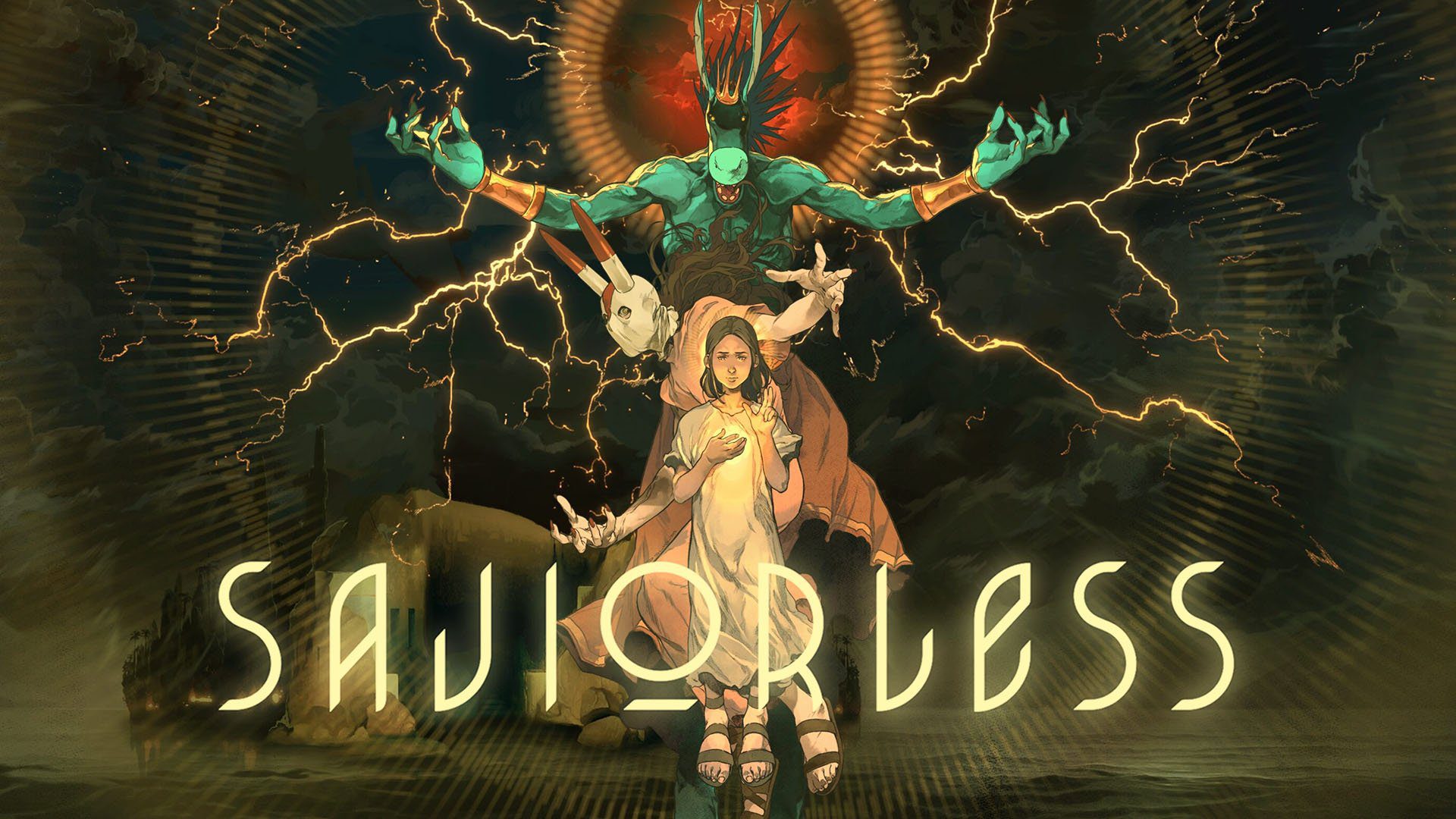The 2D Platformer is one of the oldest genres in gaming history. The genre’s core gameplay style was established years ago, and for new indie titles to stand out, they need to have innovative worldbuilding, art, and storytelling.
Saviorless, developed by Empty Head Games and published by Dear Villagers, is a 2D Platformer about the protagonist’s journey to achieve his goal and become the savior while overcoming the challenges put in his path by the narrator.
In Saviorless, we play as a young boy called Antar, who is following a radiant heron to reach the Smiling Islands, a prophesized land that allows those who reach it to become a savior. There’s not a lot of direct information about the world and the meaning of becoming a savior, but that’s ok. That’s not what the story is about, but more on that later.
As we begin Saviorless, we are introduced to the simple platforming mechanics, as well as the gorgeous art style and environmental design of the world. We are following the heron but it constantly flies away and creates obstacles along our way. This is the earliest stage of the game, a relaxed platforming experience with dynamic environments and simple mechanics. But the challenge ramps up quickly throughout Saviorless.
As we progress through Saviorless, we encounter enemies that could kill us in one hit. We don’t have any combat abilities, so we need to navigate around them, or bait them into traps or pits in the environment. We later unlock simple combat movements and abilities for short durations. Finally, it all comes down to a very challenging chase scene and a difficult and climactic boss fight at the end of the game.
After struggling for a couple of hours to beat the final stages of Saviorless, looking back at my experience made me appreciate how varied and unique each level’s design and difficulty was, and how smoothly the game transitioned between each stage. I finished Saviorless in two sessions, totaling around 10 hours, and I never felt a jump in difficulty in the gameplay. But looking back at my experience, I am surprised at how different and exciting the last few hours were compared to the relaxing vibes of the opening levels.
The combat mechanics introduced in the later half of Saviorless are very simple. We just have one attack and one dodge button added to our toolkit. This makes the pure action sequences such as boss fights a bit underwhelming, but at the same time, they are a great addition to the more challenging platforming sections.
In addition to the difficulty and the gameplay experience, the visual design of Saviorless also goes through constant changes as we go through the levels. The abandoned post-apocalyptic aesthetics of the opening levels, the surreal fantastical creature designs, and the dystopian metropolis that is the Smiling Islands, many unique and memorable scenes stuck with me throughout the game.
The music and sound design of the game also complement the visual journey in Saviorless. The music fits the tone and atmosphere of each level, and interacting with various elements of the world is accompanied by great sound effects.
While Saviorless delivers a decent experience in various aspects of its design, it’s the story that takes the biggest risk. When the game begins, we see a scene from the narrators of the story, sitting on top of a mountain. The eldest clarifies the role of the narrator in the story to his pupils; they have to stop the protagonist from reaching his goal. But the story has been told time and time again, and the young narrators are tired of the protagonist always facing challenges. Once their elder falls asleep, they tell a new story, with a new protagonist who does reach the Smiling Islands and becomes a savior, but what they don’t realize is that they have created a villain in the story of Antar.
Saviorless takes a meta approach to its narrative, splitting the story of Antar from the story of the narrators, and introducing new protagonists, villains, and events, based on the actions of the narrators. While it’s an innovative take on storytelling and narrative structure, the delivery is somewhat complicated and hard to follow at times.
There are popular indie platformer games that rely solely on environmental design to tell their stories, and it works well especially when there is no text to distract from the world’s immersion. There are brilliant pieces of environmental storytelling in Saviorless as well, but the majority of the story is told through text. This makes the narrative scenes seem abrupt and interrupts the flow of the game, and the complexity of the narrative structure makes this disconnect even more noticeable.
I wanted to like the story of Saviorless, and I admire the writers’ attempt to take a step out of the heroic journey trope and experiment with the narrative design, but in the end, I remember the game as two separate pieces. The challenging, consistent, and fun gameplay that is complimented by great visual design, and then the interesting idea in the story that ultimately wasn’t executed too well.
If you are looking for an exciting and beautiful 2D Platformer, Saviorless delivers hours of engaging gameplay with various degrees of challenge and memorable set pieces. It also takes an innovative approach to its storytelling, and while it didn’t resonate with me, it made me think about the narrative design of stories as a whole and appreciate this new take for what it is.
Nima played Saviorless on PlayStation 5 with a review code.
